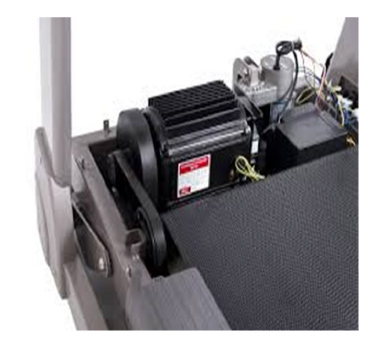Whether you’re looking to purchase a new treadmill or looking to update an existing one, knowing about which kind of motor to look for is vital to the success of your treadmill use. The motor is the main hub and carries the most weight mechanically. They vary in their abilities and capacities and are not all alike. It is essential to consider a few different variables with its motor before you make your treadmill purchase. Aside from the user, the motor does the most work in the treadmill. Poor quality motors are likely to overheat and require unnecessary repairs. The best way to check if your motor is a good quality motor is by checking the manufacturer warranty. A high-quality motor will have a longer warranty period and is a safer investment. When it comes down to the nuts and bolts of the matter, treadmill motors are not wholly difficult to understand. Treadmill motor energy is measured in horsepower (HP) and can be sorted into three different rating systems:
1. Peak Duty: Generally the weakest. “Peak” stands for the peak horsepower that the treadmill will reach and no more.
2. Treadmill Duty: In-between peak and continuous
3. Continuous Duty: The highest rank. The number associated will describe how much power is maintained throughout the workout.
While many motors will claim to be of identical horsepower, it is pertinent to note that every motor is not built the same. Cheaper prices mean that the product consists of poorly made parts and copper wire. Do not be swayed solely by low prices. A treadmill that originally cost MRP of INR 65000 or more is likely to possess a durable motor. Less expensive models are not likely to have a reliable motor installed.
Consider the following:
For walkers: 2.0 horsepower continuous duty motor will suffice
For joggers: 2.5 horsepower continuous duty should be the minimum
For runners: 3.0 horsepower continuous duty or higher
Also note that if any of the users of the treadmill weigh over 110Kg (240 pounds), HP should be increased by 0.5 for proper support, no matter the fitness goals. This means the HP should be at least 2.5 HP for walkers, 3.0 for joggers, and 3.5 for runners. Such precaution will extend the life of your motor. As for sound, note that motors employing direct current (or known as DC) cause less noise compared to motors that use alternate current (also known as AC).

